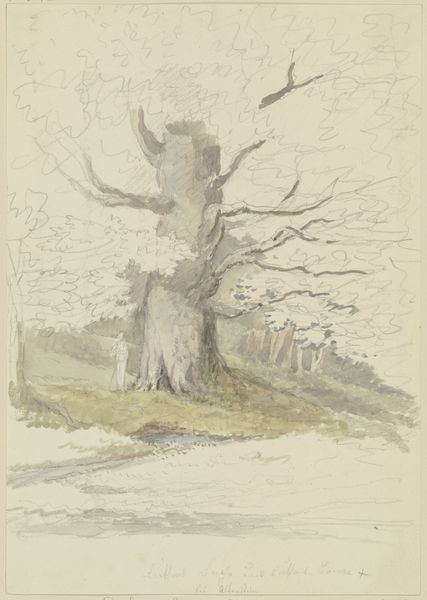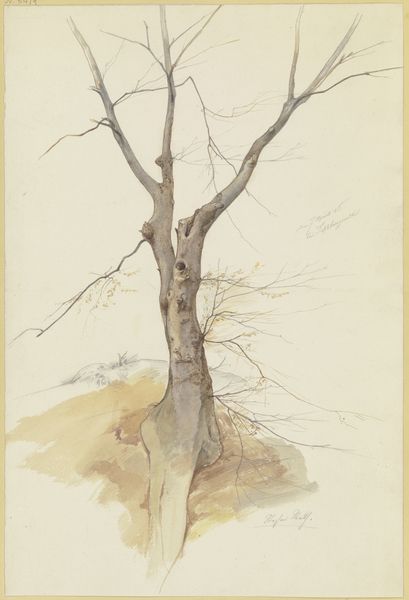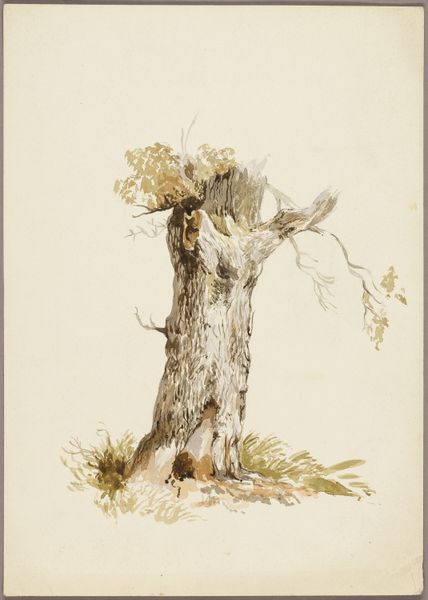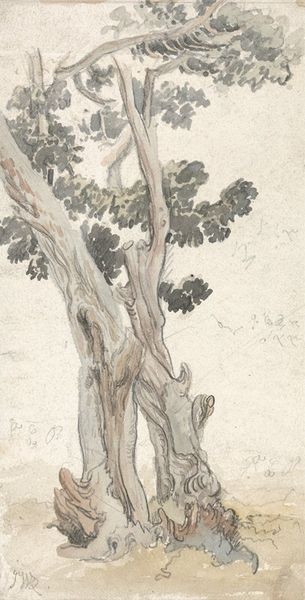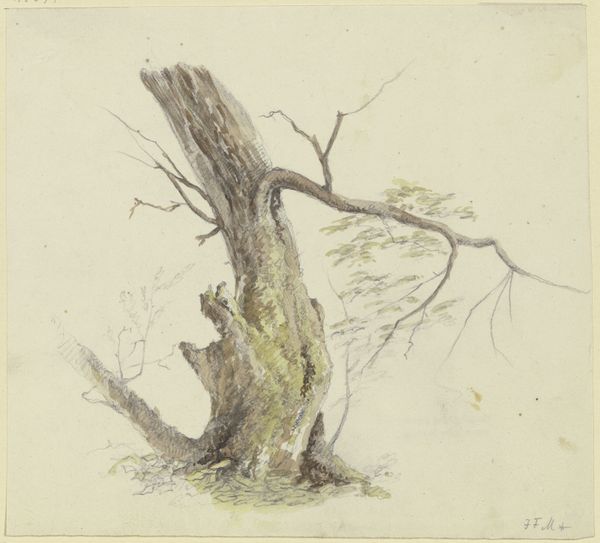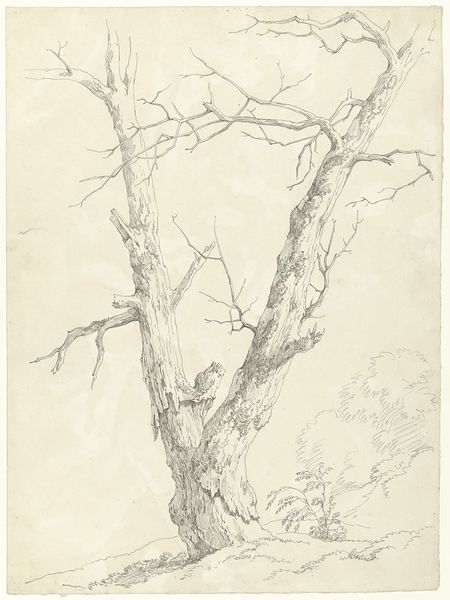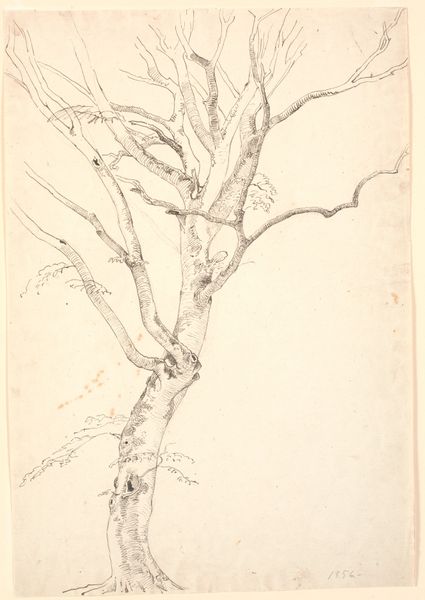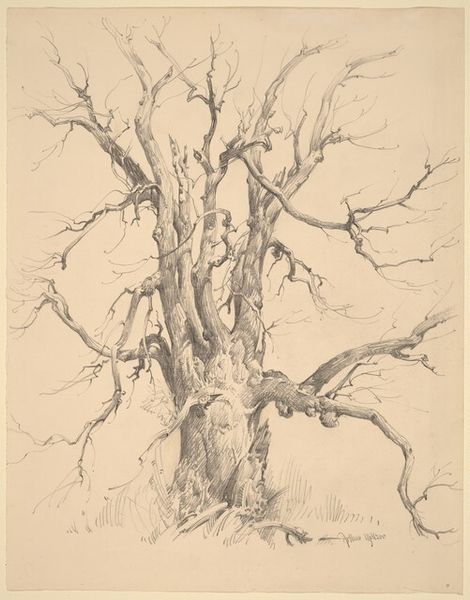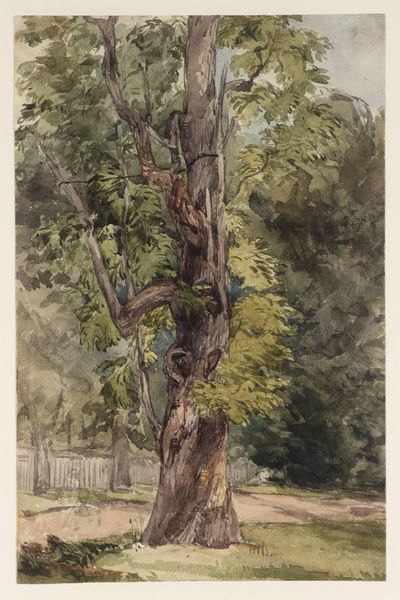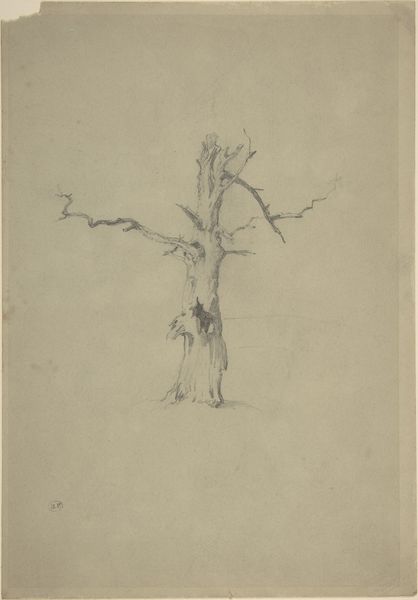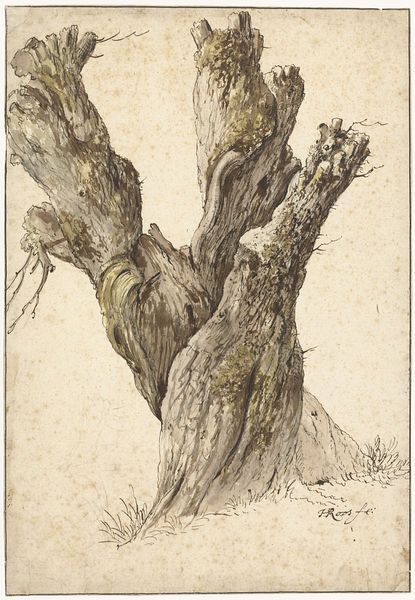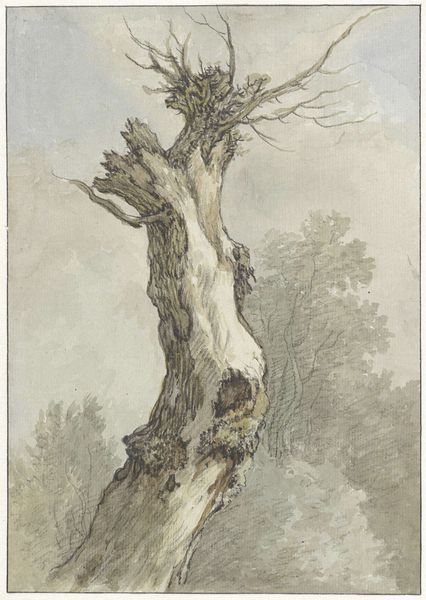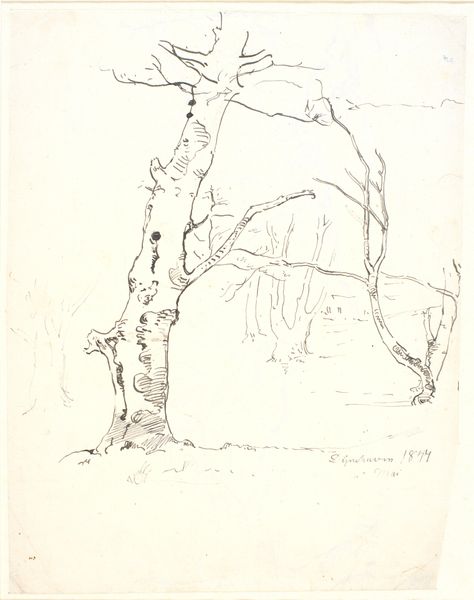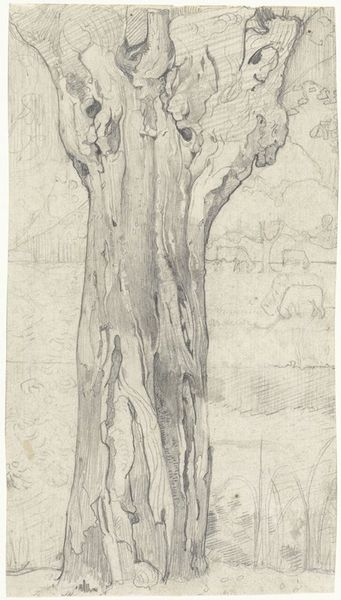
Dimensions: support: 376 x 272 mm
Copyright: CC-BY-NC-ND 4.0 DEED, Photo: Tate
Curator: Here we have Cornelius Varley’s "Study of a Tree. Verso: Sky Study," made around 1803. The watercolor and graphite piece depicts a solitary tree trunk. It almost feels like a portrait. Editor: My first thought is of fragility. It’s a decaying tree, its core exposed, yet it still stands, a raw, vulnerable figure within a sparse landscape. Curator: Right, and trees often symbolize resilience, life cycles, the connection between earth and sky. Varley likely encountered this tree in nature and was moved by its symbolic weight. Editor: It’s interesting that the other trees are only suggested. It almost amplifies a sense of isolation. The vulnerability of the individual versus the silent witnesses to its decay. Curator: Perhaps Varley intended to capture the sublime in the ordinary, finding a profound statement about the natural world in the form of a dying tree. Editor: Maybe the artist was interested in creating a memento mori, reminding viewers of the fleeting nature of existence. Curator: A very real possibility. It’s certainly more than just a botanical sketch. It speaks to something deeper. Editor: Yes, it’s a testament to the ongoing dialogue between decay and endurance. A narrative, if you will, that whispers across centuries.
Comments
tate 7 months ago
⋮
http://www.tate.org.uk/art/artworks/varley-study-of-a-tree-verso-sky-study-t08470
Join the conversation
Join millions of artists and users on Artera today and experience the ultimate creative platform.
tate 7 months ago
⋮
Cornelius Varley was brought up from a young age by his uncle Samuel, an instrument maker and amateur scientist. For many years, Cornelius Varley's own interest in science ran in tandem with his practice as an artist. He seems to have been strongly influenced by Thomas Girtin's reputed habit of sketching from nature in all weathers. Like Girtin, he made an impressive range of coloured nature studies - of clouds, trees and stretches of open countryside. Many of them are left unfinished, which suggests that the impulse behind them is a much scientific curiosity as artistic feeling. In 1811 Cornelius Varley patented an instrument known as the Graphic Telescope. This could project a reduced image onto paper, which could then be traced by hand. Gallery label, September 2004
